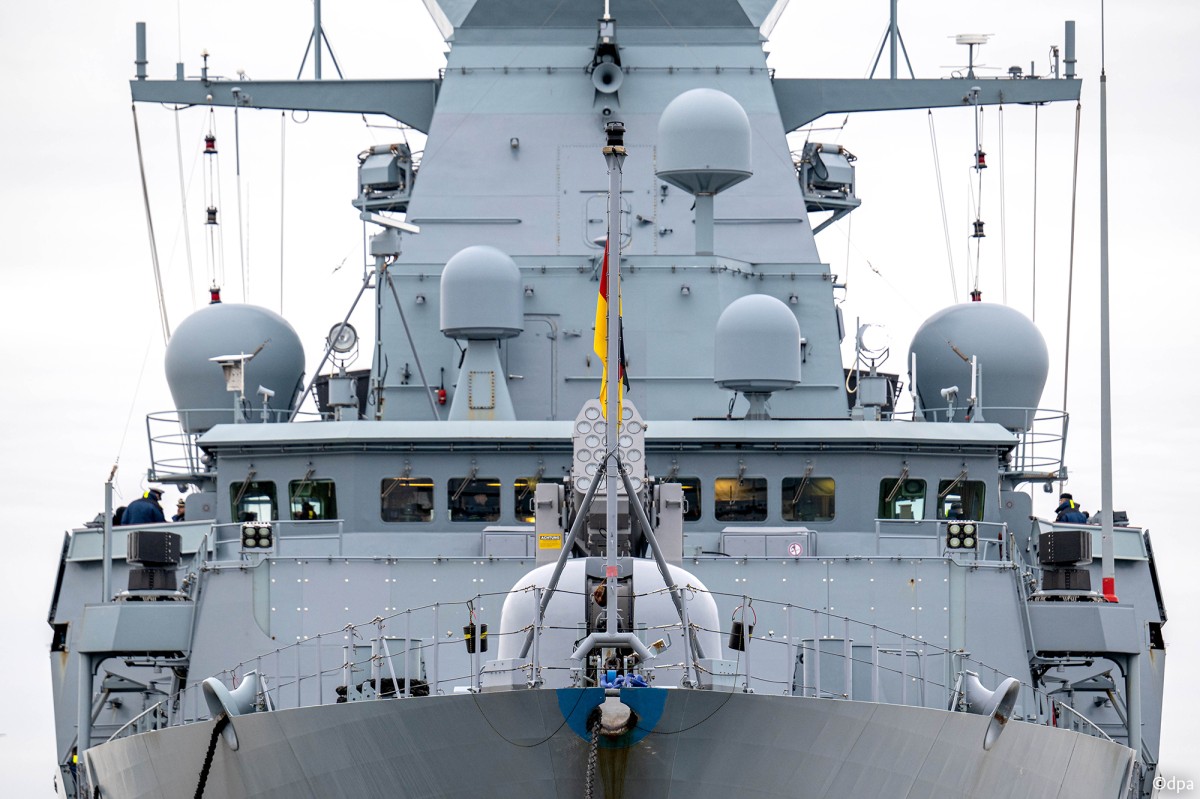The German Navy finds itself grappling with a major embarrassment following an incident in the Red Sea, where its Type 124 Sachsen class frigate FGS Hessen mistakenly targeted a US MQ-9 drone as hostile, only to have its subsequent missile launches fail to hit their mark.
The debacle unfolded when radar systems aboard the Hessen incorrectly identified a drone, later revealed to be a US MQ-9 Reaper, as a potential threat.
In response, the frigate launched two missiles to neutralize the perceived danger. However, both missiles missed their target, plunging into the sea due to technical failures.
The incident, detailed in a report titled “Embarrassment for our Navy in the Red Sea” by the German tabloid Bild, underscores the shortcomings within the German armed forces and has ignited criticism of Defense Minister Boris Pistorius’ leadership.
Michael Stempfle, Spokesman of the German Federal Ministry of Defence, mentioned that when the drone was targeted and fired upon, it wasn’t immediately evident which nation it belonged to or if it had ties with any allied countries.
After this initial ambiguity, the Hessen attempted to shoot down the drone, but unfortunately, the attempt was unsuccessful.

“The situation resolved itself in the sense that it was not a hostile drone, as it was determined only afterward,” Stempfle added.
While Stempfle refrained from disclosing the drone’s country of origin, the report cited military insider Thomas Wiegold shedding light on its US roots. Before the incident, the Hessen had communicated with allied nations regarding drone activity in the area, but none claimed ownership of the drone in question.
According to some accounts, the MQ-9 drone had its Identification Friend or Foe (IFF) system turned off, and the operational command, presumably EUNAVFOR ASPIDES (an EU defensive maritime security operation under the EU Common Security and Defence Policy to restore and safeguard freedom of navigation in the Red Sea and the Gulf), was unaware of its presence. A spokesperson mentioned that “the incident has been analyzed, and the deficit was corrected.”
Meanwhile, the German frigate FGS Hessen successfully intercepted and downed two Houthi drones at close range while conducting operations in the Red Sea.
This series of events occurred shortly after the vessel arrived in the region on February 8, following its departure from Germany.
The frigate has been deployed to contribute to the safeguarding of international shipping in response to the continued attacks by Houthi rebels with alleged Iranian backing.
Insufficient Ammunition & Doubts Regarding Operational Preparedness
This latest incident casts a shadow over Germany’s military preparedness and has raised serious questions about the competence and effectiveness of its naval capabilities. Criticism has further intensified, especially considering that the missile in question, the SM-2 type, is no longer in production, prompting concerns about the replenishment of ammunition stocks.
The Standard Missile 2 (SM-2) is a ship-launched air defense missile produced by Raytheon Missiles & Defense, a subsidiary of Raytheon Technologies. According to the manufacturer, the missile serves as a fleet-area air defense weapon, offering anti-air warfare and limited anti-surface warfare capabilities against modern anti-ship missiles and aircraft.
Boasting a range of 90 nautical miles and reaching altitudes of 65,000 feet, the SM-2 plays a crucial role in layered defense systems, enhancing operational flexibility and safeguarding naval assets.
However, the SM-2 Block IIIA missiles utilized by vessels such as Hessen and sister ships are out of production, as revealed in a recent response to a member of parliament by the German Ministry of Defence (BMVg).
The defense policy spokesperson for the Christian Social Union faction in the Bundestag, Florian Hahn, said, “We have now only learned on inquiry that part of the ammunition of the frigate ‘Hessen’ can no longer be procured because there is no longer the corresponding industrial capacity.”
Hahn warned that if the stocks of ammunition were depleted, the navy would be unable to replenish them, ultimately resulting in the withdrawal of the frigate. Additionally, he also accused the traffic light coalition government (so-called because of the colors of the parties in it: Social Democratic Party of Germany, the Free Democratic Party, and Alliance 90/The Greens) of concealing this vital information from the opposition for months.
Hahn further noted that this lack of transparency led to a situation where parliament approved deployment without being informed of the apparent ammunition shortage affecting the 124-class frigates.
Alex Luck, Naval defense expert, pointed out, “If the revelations are accurate, it implies all Sachsen-class frigates will have to undergo modernization of their combat management system and possibly also hardware upgrades in order to use the newer SM-2 Block IIIC now in low rate initial production. Details on the exact technical issues remain obscure.”
Since assuming office in March 2022, German Navy Chief Vice Admiral Jan-Christian Kaack has repeatedly underscored the significance of ammunition stockpiles amid the Bundeswehr’s ongoing struggle with widely reported ammunition shortages across all services.
Recently, it was also reported that Germany was in “discreet negotiations” with India to acquire artillery ammunition. The report mentioned that India supposedly possessed “several hundred thousand rounds” stored in its stockpiles.
The latest incident stands as a stark reminder of the German Navy’s uncertain operational readiness and raises major concerns about its capability to effectively respond to emerging threats and fulfill its strategic objectives.
- Contact the author at ashishmichel(at)gmail.com
- Follow EurAsian Times on Google News




